The typical visitor needs to remind himself that despite appearances (and contents), the Villa Escudero Museum is not a church. In fact, there is a proper house of worship on the estate, just a couple of minutes’ drive (somewhat longer via carabao-drawn sled) from the Museum.
The Chapel of the Ascension shares its architect with the Cathedral of Baguio City. Here is a view of the right side elevation, clearly evidencing the structure’s modern, mid-20th-century sensibilities.
The archway in front of the façade clearly identifies the date of completion; the initials stand for Arsenio Escudero and Rosario Adap, the power couple behind the development of the agricultural estate and the accumulation of its religious and other cultural assets, some of which we had previously viewed in the Museum.
This Chapel though feels like an extension of the Museum, with its wealth of devotional artefacts. The gate and façade feature large stone sculptures of the Four Evangelists and Saints Peter and Paul – unfortunately I only had time to snap four of these six figures, so congratulations in advance (but no prizes) to readers who can identify who these are supposed to be, and which saints are missing from the photographs.
Before entering the Chapel, we could go around to the rear and view this memorial to the Escudero clan’s ancestors. I’m a big fan of cemeteries, tombs, and crypts, so this was a real treat for me.
An even bigger treat for this enthusiast of the morbid was the possibility of visiting the crypt underneath the Chapel, accessible from this entrance directly opposite the above memorial.
This was the private burial chamber of all the members of the Escudero family, including the matriarch herself,
one of her children,
and, sadly, a member of the younger generation, killed not long ago in unfortunate circumstances.
Despite the potentially gloomy atmosphere down here, the crypt is tastefully decorated in a hyper-classical style,
which even lesser Pharaohs would envy,
except that they’re not Christian,
nor members of the Escudero clan.
Once we’ve had our fill of crypts, tombs, and cemeteries, we then make our way back to the front of the Chapel. Inside, above the main entrance, is a choir loft.
In the lower right corner of the above photo, we sharped-eyed santo-spotters will easily make out a calandra, which predictably holds an image of the Dead Christ, different from the one that we saw earlier in the Museum.
Along both left and right walls are positioned more religious images, including a Holy Infant,
a Holy Family group (clearly dated on the base to 12 July 1917),
and a Sacred Heart.
The altar is well-elevated,
as we remember that directly beneath it is the family crypt that we visited earlier.
The niche on the left side holds an image of the Blessed Virgin Mary,
and that on the right an image of her most chaste spouse.
This being the Chapel of the Ascension, the niche on top and center is reserved for a large fully-sculpted image of the Lord Ascending, yet again from the Escudero family’s favored santero of the mid-20th century, Irineo Cristobal.
However, for reasons that were given to me but that I now don’t remember (perhaps I need some gingko biloba), this image was pushed to the side behind the altar, and the center niche occupied by the Escudero family’s truly antique (19th century or perhaps even older) processional image of the Resurrected Christ, which conveniently doubles as the Ascension of Christ.
Because of its very elevated position, all I could take were the shots shown above – a near-bottom-view from the front, and clear view of the rear from the passage behind the altar, accessible via a staircase.
However, I do remember (without any gingko biloba) that this same image is used during the estate’s annual fiesta on Ascension Day. My second-ever visit to Villa Escudero was just a few weeks after the first one in the summer of 2004, precisely to participate in the fiesta.
With what seemed to be the entire city population converging on the place, I still managed to take photos of this antique image after it had been processed in a fluvial parade down the river that runs through the hacienda, and subsequently paraded into the social hall so that devotees and guests may venerate it.
Despite what we might feel about that overly-large garland that makes Christ look like some early 1970’s Filipino pop-star, we have to concede that at least He doesn’t look like a sampaguita vendor.
Which is probably fortunate, because the accompanying Marian image is similarly adorned.
This rear view of the Christ image clearly shows that it is mounted on an antique silver anda / andas,
seen even more closely here.
Going back to the Chapel (and back to the future for about three years), we now focus on the real gem in this house of worship, situated to the right of the altar – San Pablo’s renowned processional tableau of the Pieta, yet another masterpiece made for the Escudero family by the master, Irineo Cristobal.
Despite the difficulty of photographing through glass and with many other distracting light sources around the Chapel, one needs to persist to be able to digitally record the precise appearance of this illustrious work of art.
While the Virgin in this tableau is admirable for its beauty in the midst of pathos,
in my eyes it is the Christ image’s rendering, with its graceful bend and drop in the face of its deadweight, that much more clearly demonstrates the skill and mastery of its artist.
Having already gone around, inside, and under the Chapel of the Ascension, we now take a break to once again rest our santo-addled and saturated eyes and minds (like drinking from a fire hydrant, my business school professor used to say).
And prepare to undertake some real Akyat-Bahay gangsterism next. Finally.


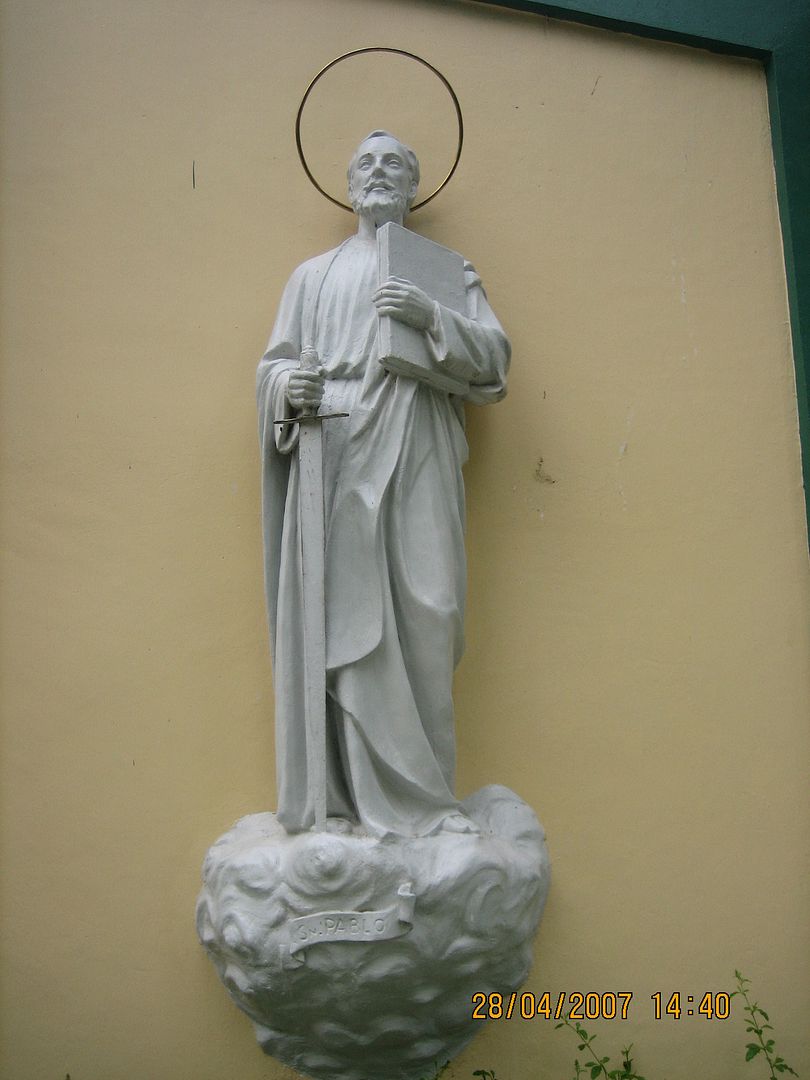
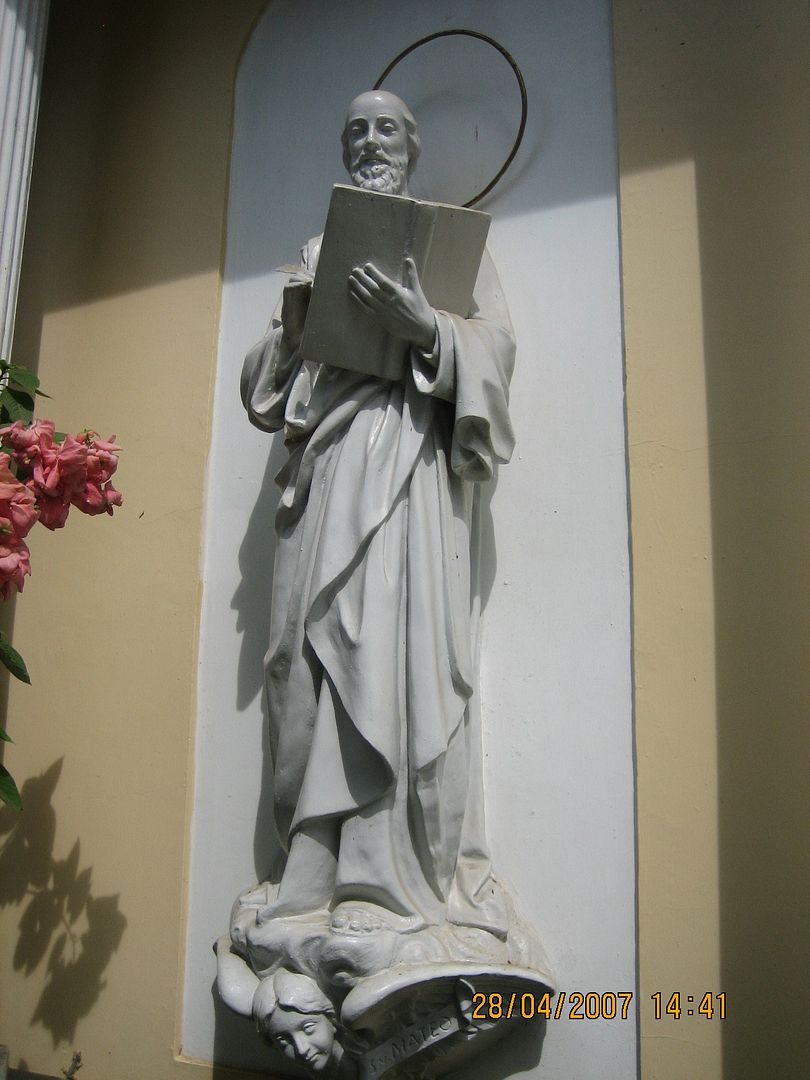
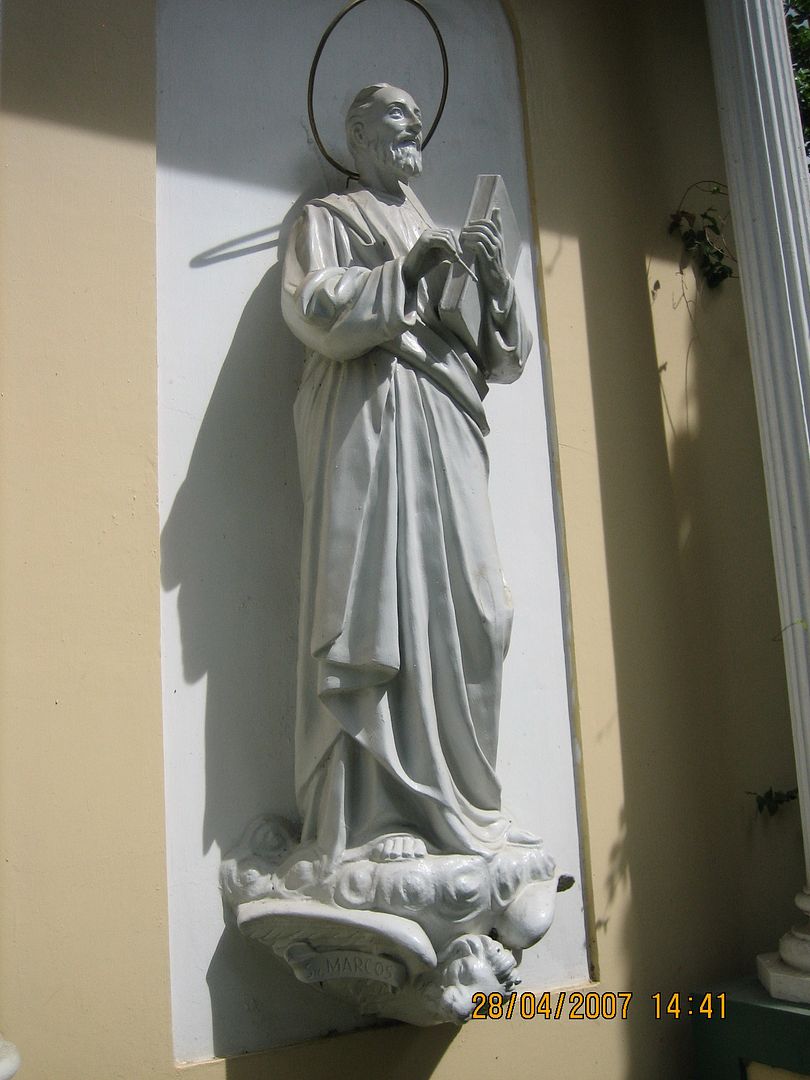


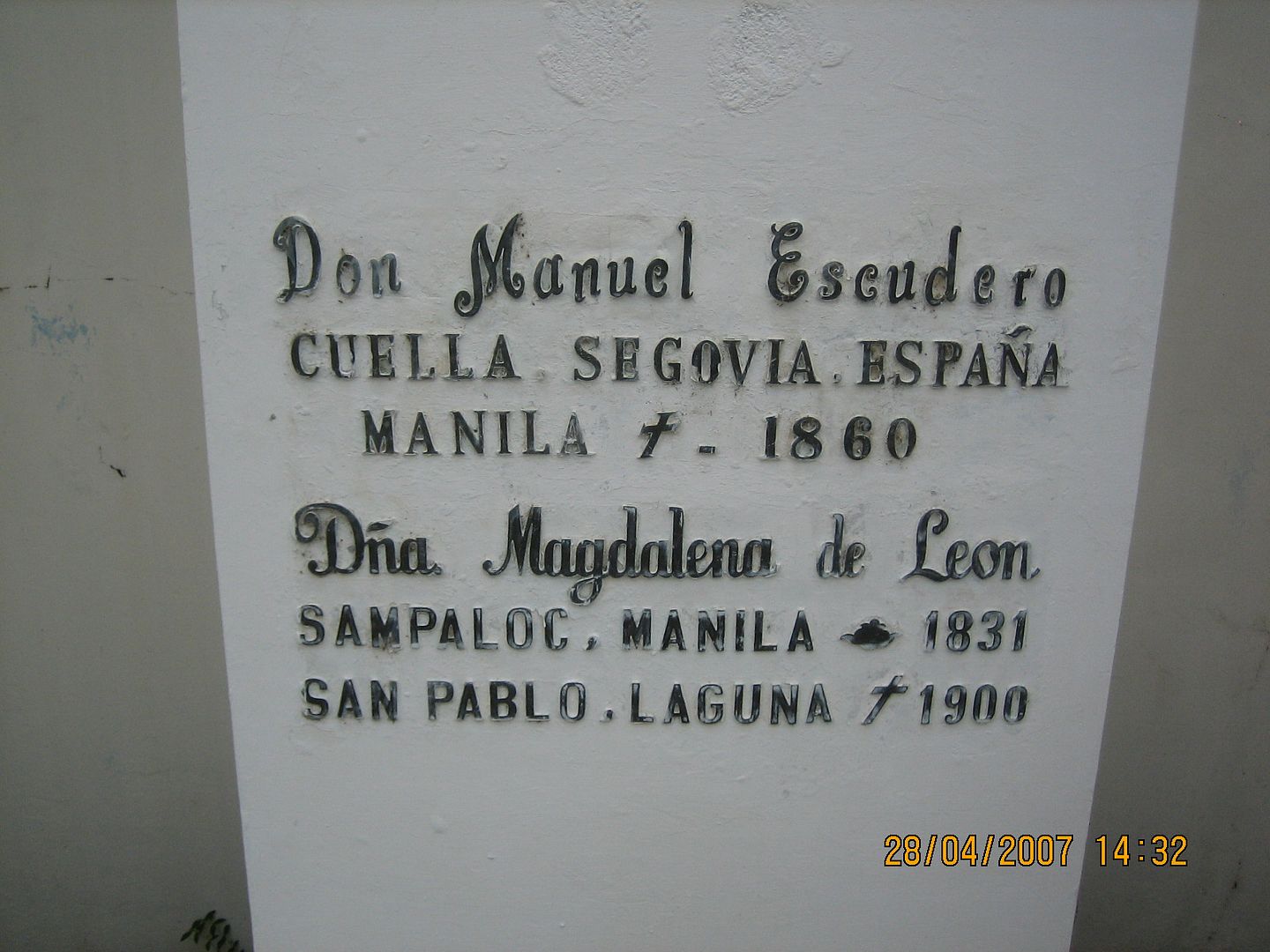











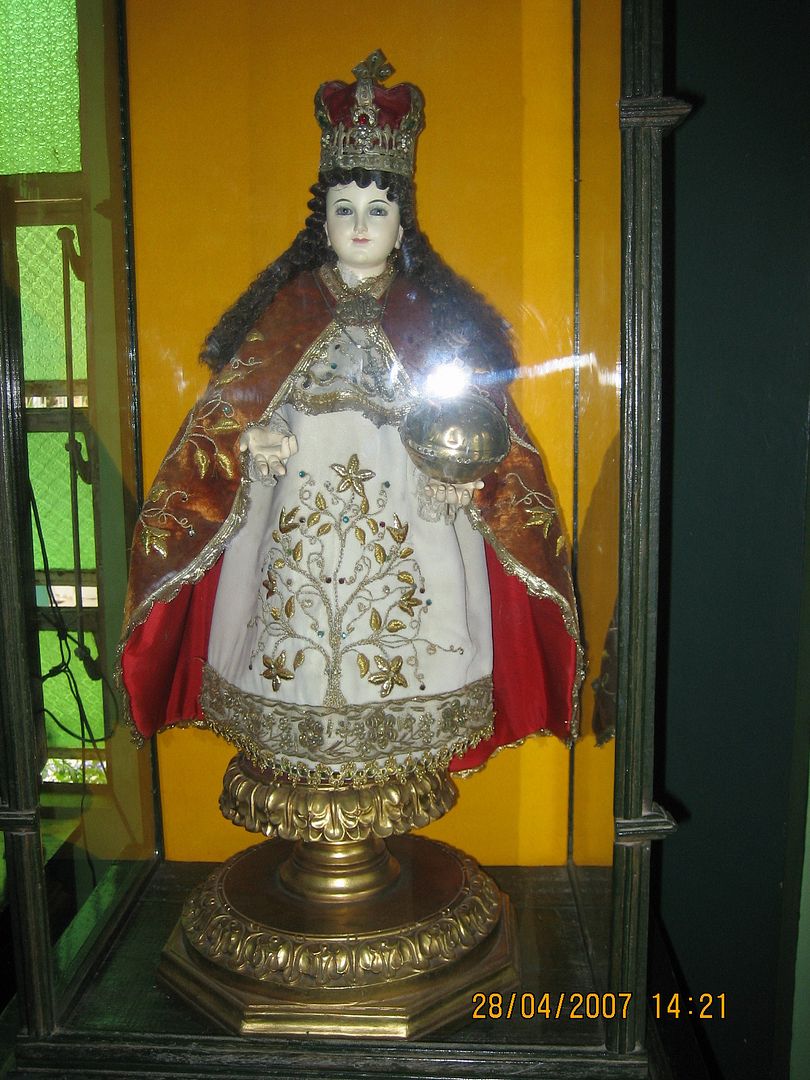




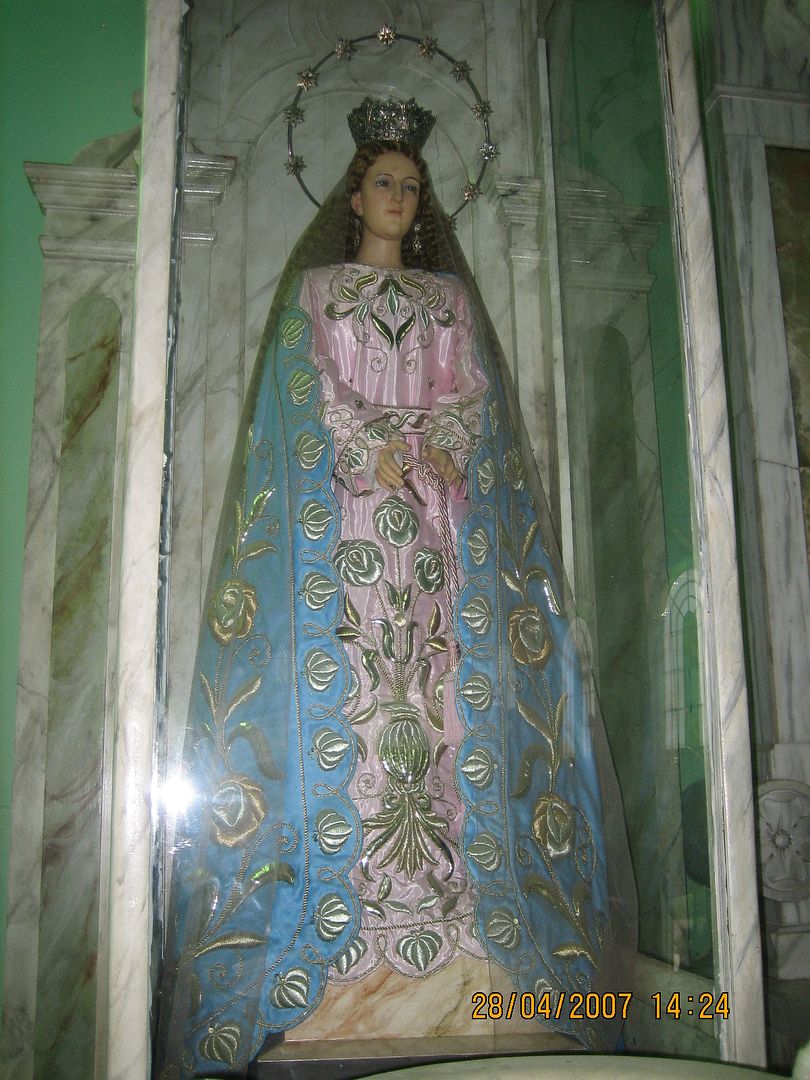




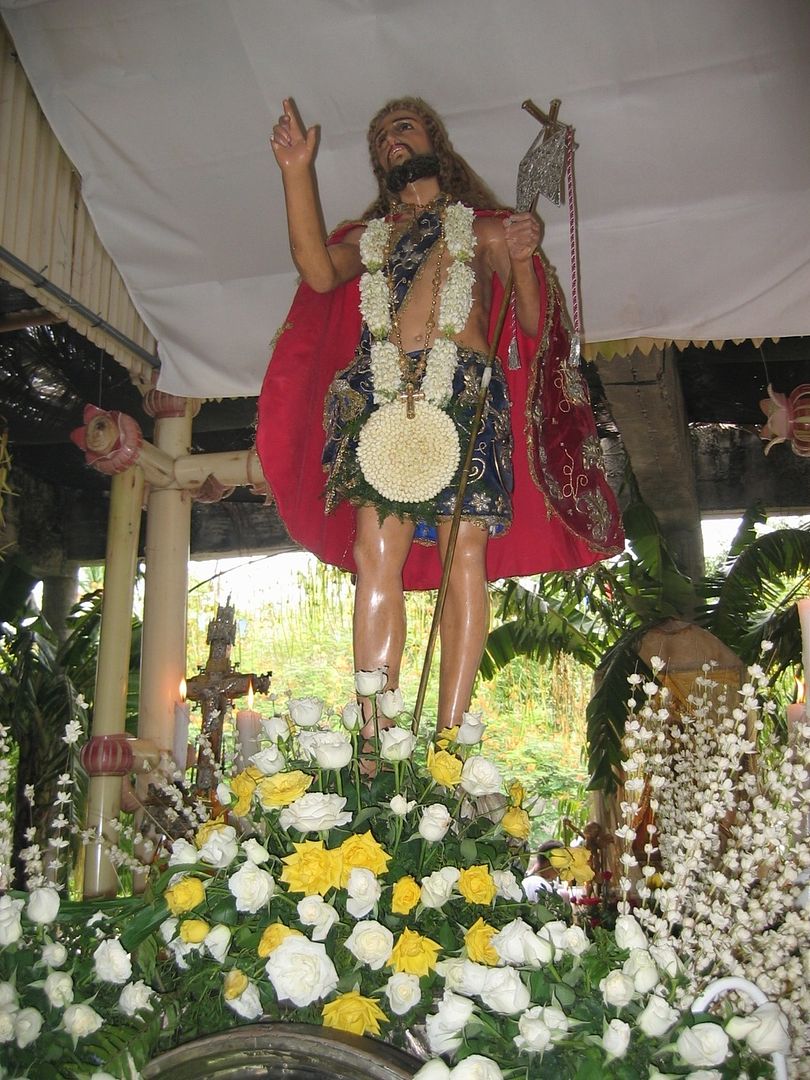
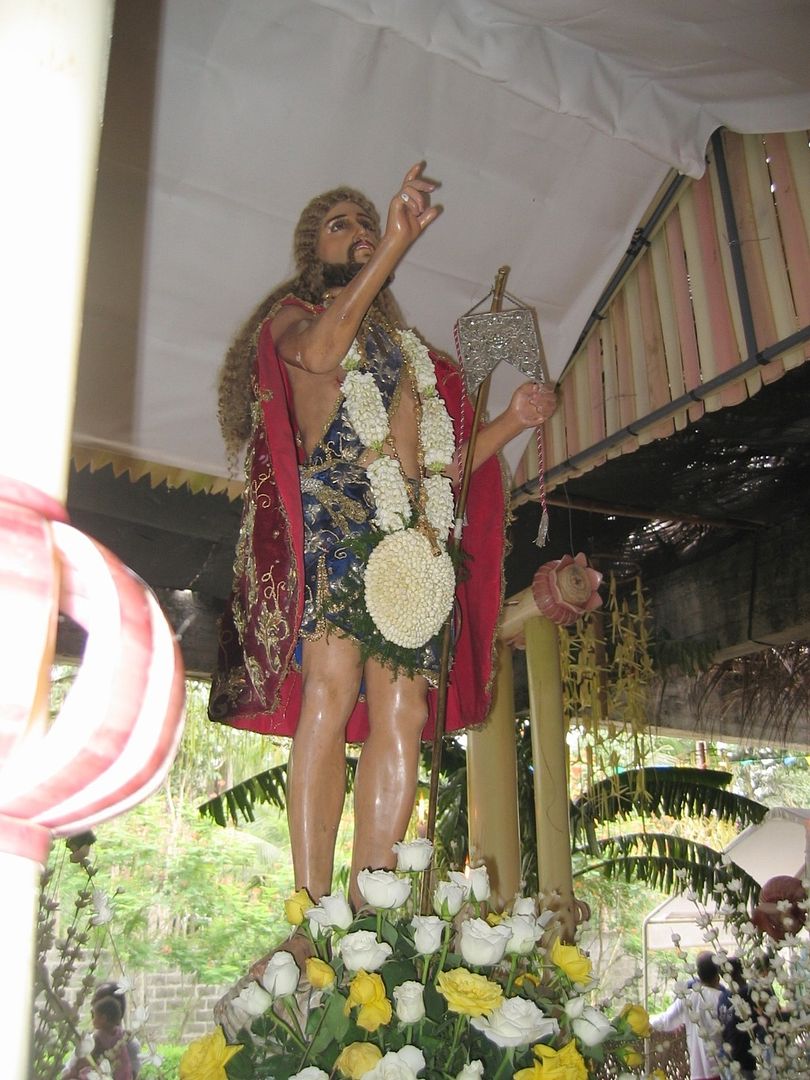
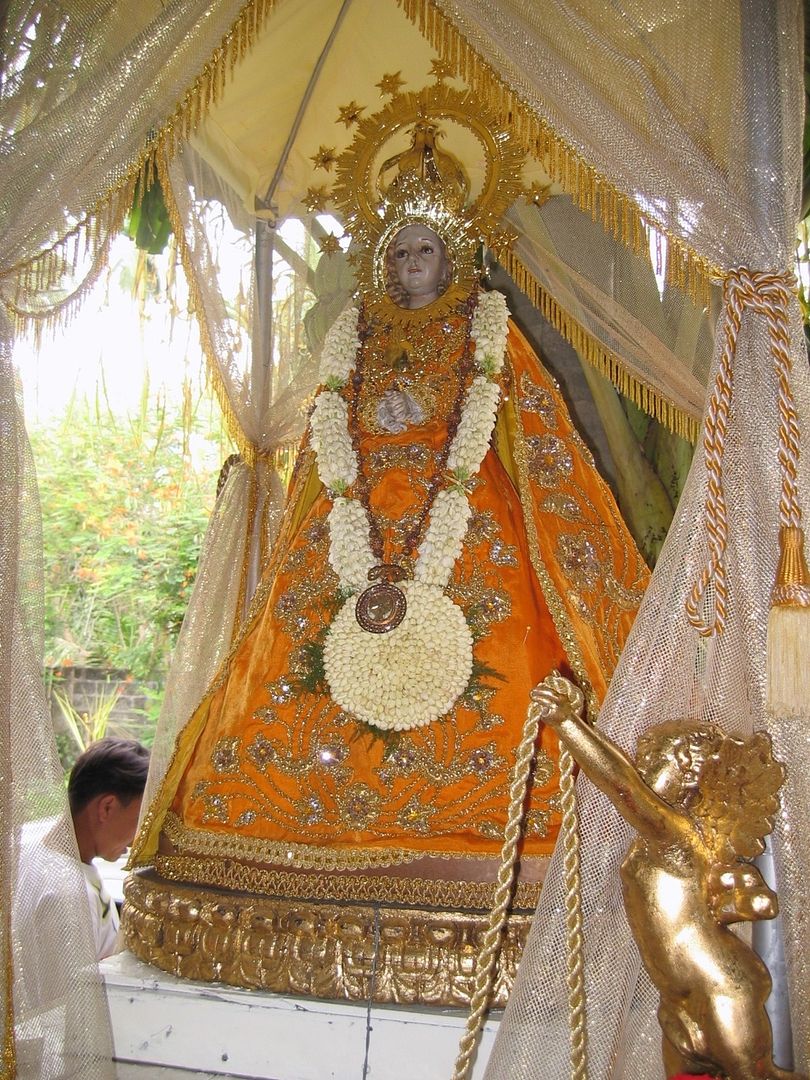
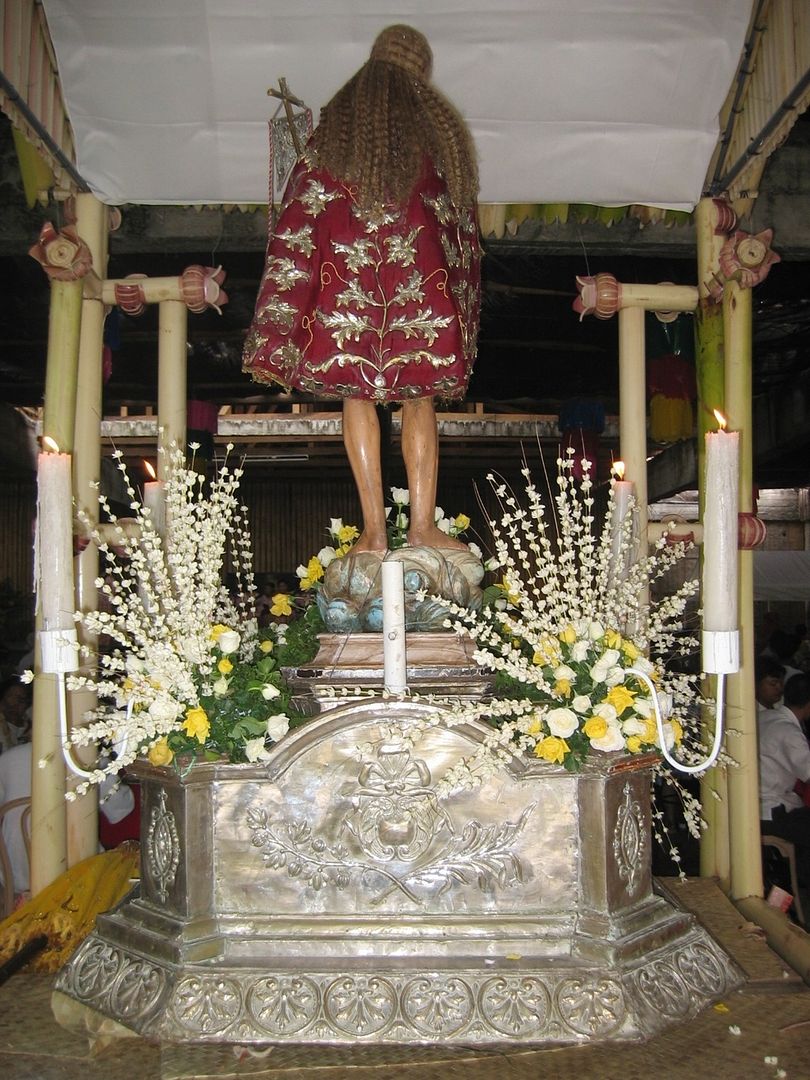
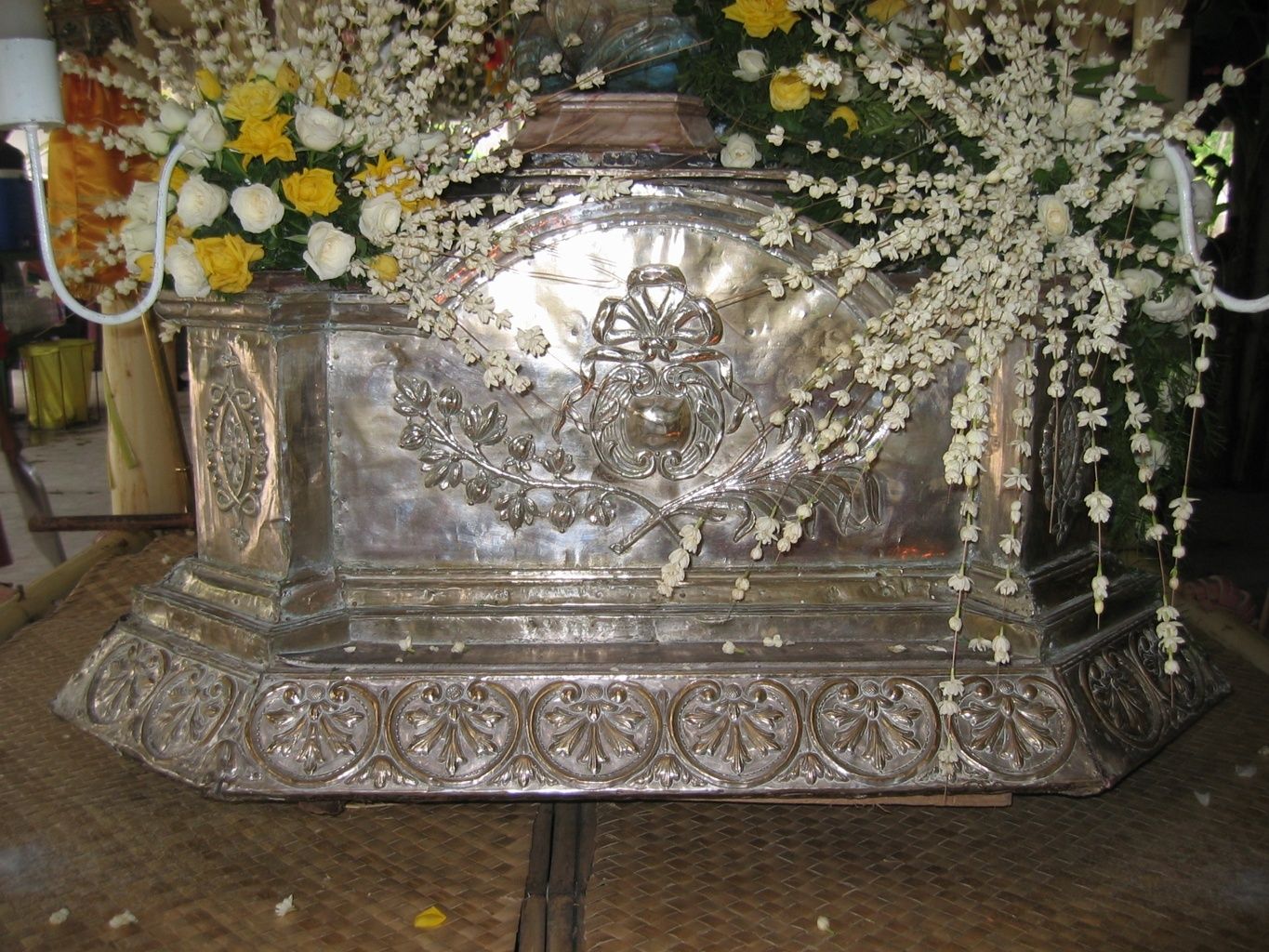

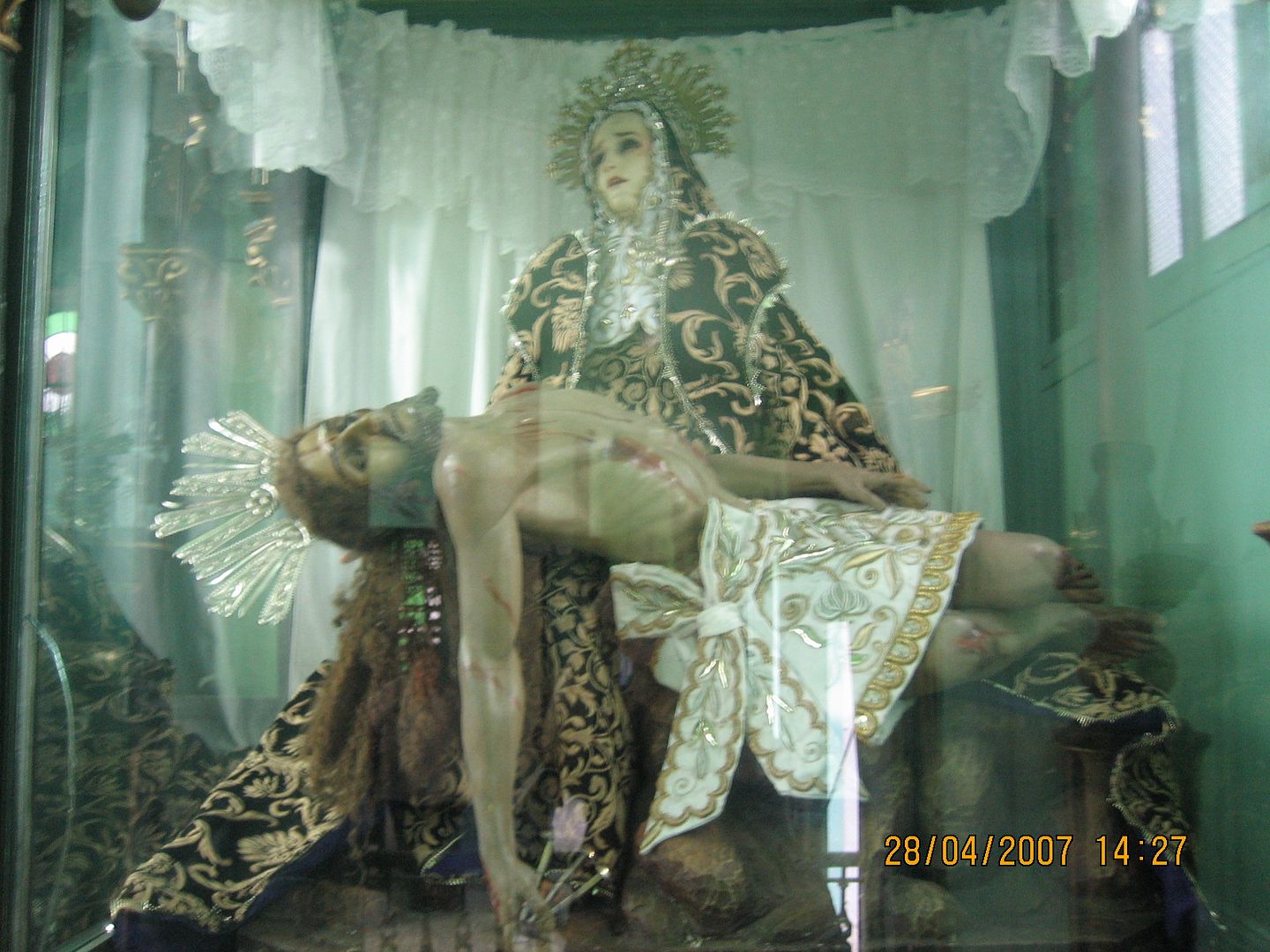

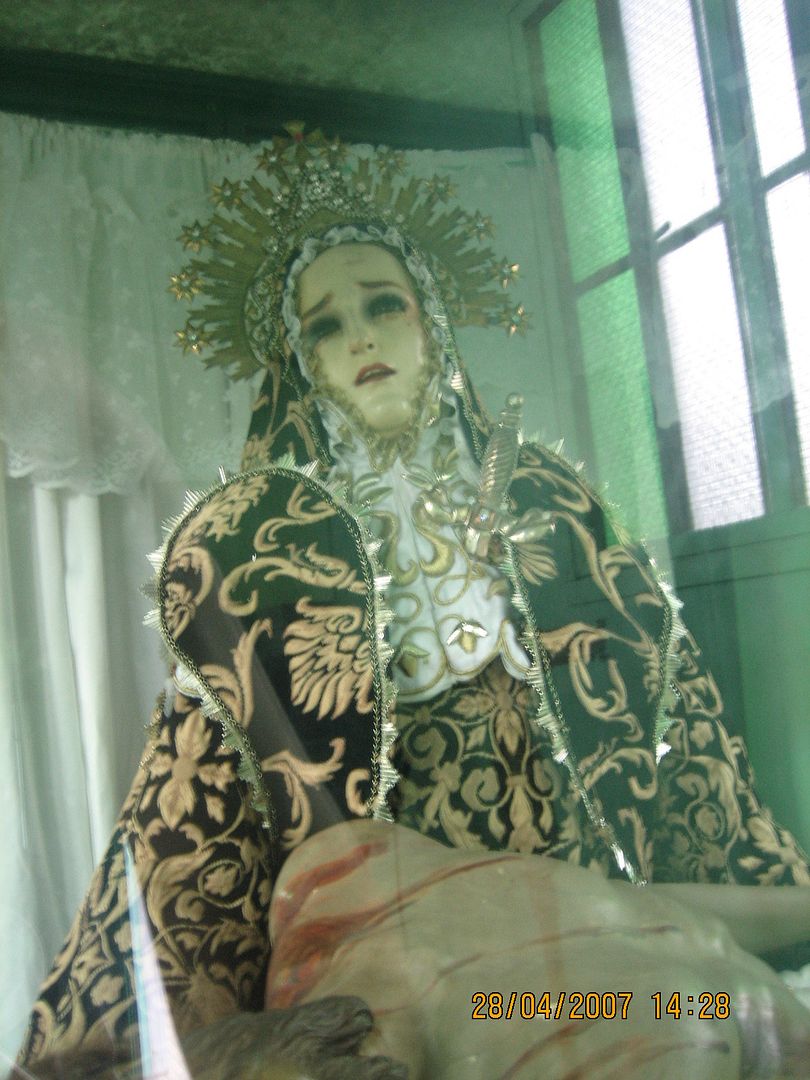


No comments:
Post a Comment